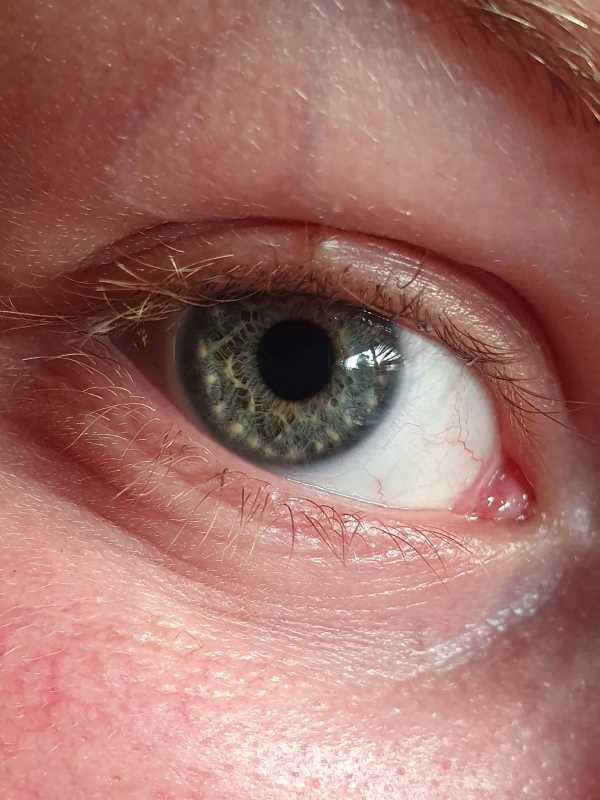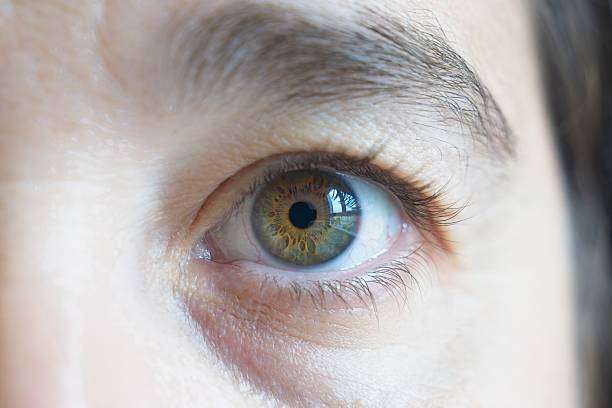Votre panier est vide
What Are the White Spots in the Iris? Causes, Symptoms, and Treatment Explained

The human eye is a fascinating organ, often referred to as the "window to the soul." One of its most striking features is the iris—the colored part of the eye that controls the size of the pupil. While most people have smooth, evenly pigmented irises, some individuals notice unusual white spots or discolorations within their irises. These white spots can raise concerns about eye health, but understanding their causes and implications can help alleviate worries and guide you toward proper care.
What Are White Spots in the Iris?
White spots in the iris are areas of depigmentation or structural changes that appear lighter than the surrounding tissue. They may be present from birth (congenital) or develop later in life due to various factors. The appearance of these spots can vary—they might look like small dots, patches, or even streaks—and their significance depends on the underlying cause.
Common Causes of White Spots in the Iris
-
Iris Freckles (Naevus)
Similar to freckles on the skin, iris freckles are harmless pigmented spots that occur naturally. They are typically benign and do not require treatment unless they change shape, size, or color over time. -
Iridocorneal Endothelial Syndrome (ICE)
This rare condition affects the cells lining the cornea and can lead to white spots or irregularities in the iris. ICE syndrome is more common in women and may result in vision problems if left untreated. -
Heterochromia
Heterochromia refers to differences in pigmentation within one or both eyes. In some cases, partial heterochromia can create the appearance of white or lighter spots in the iris. This condition is usually harmless and congenital. -
Inflammation or Uveitis
Uveitis is inflammation of the uvea, the middle layer of the eye, which includes the iris. It can cause white or cloudy spots in the iris along with redness, pain, and blurred vision. Prompt medical attention is essential to prevent complications. -
Trauma or Injury
Physical trauma to the eye can damage the iris and lead to scarring or depigmentation, resulting in white spots. If you've experienced an injury, it's important to monitor any changes closely and seek professional advice. -
Pigment Dispersion Syndrome
This condition occurs when pigment granules from the back of the iris break loose and float into other parts of the eye. Over time, this can create visible white or light-colored areas in the iris. -
Congenital Conditions
Certain genetic conditions, such as Waardenburg syndrome or albinism, can cause abnormalities in iris pigmentation, leading to white or pale spots. -
Age-Related Changes
As we age, the structure of the iris can change, sometimes causing small white spots or thinning of the tissue. These changes are generally harmless but should still be evaluated by an eye doctor.
When Should You Be Concerned?
While many white spots in the iris are harmless, certain signs warrant immediate medical attention:
- Sudden appearance of new spots
- Changes in the size, shape, or color of existing spots
- Accompanying symptoms like eye pain, redness, blurred vision, or sensitivity to light
- Family history of eye diseases or conditions
If you notice any of these warning signs, schedule an appointment with an ophthalmologist to rule out serious conditions like glaucoma, tumors, or infections.
Diagnosis and Treatment Options
An eye specialist will perform a comprehensive examination using tools like slit-lamp biomicroscopy to assess the nature of the white spots. Depending on the diagnosis, treatment options may include:
- Monitoring: For benign conditions like iris freckles, regular check-ups are sufficient.
- Medications: Anti-inflammatory drugs or antibiotics may be prescribed for inflammatory conditions like uveitis.
- Surgery: In severe cases, surgical intervention may be necessary to address structural issues or restore vision.
Prevention Tips for Healthy Eyes
Although not all causes of white spots in the iris are preventable, maintaining good eye health can reduce the risk of related complications:
- Wear UV-protective sunglasses outdoors.
- Avoid rubbing or injuring your eyes.
- Schedule routine eye exams, especially if you have a family history of eye disorders.
- Manage systemic conditions like diabetes, which can impact eye health.
Conclusion
White spots in the iris can stem from a variety of causes, ranging from harmless pigmentation variations to more serious medical conditions. By staying informed and seeking timely medical advice, you can ensure your eyes remain healthy and functional. Remember, early detection and treatment are key to preserving your vision and overall well-being.
If you’re concerned about white spots in your iris or simply want peace of mind, don’t hesitate to reach out to an eye care professional today. Your eyes deserve the best care possible!
Laisser un commentaire
Les commentaires seront approuvés avant de se présenter.




